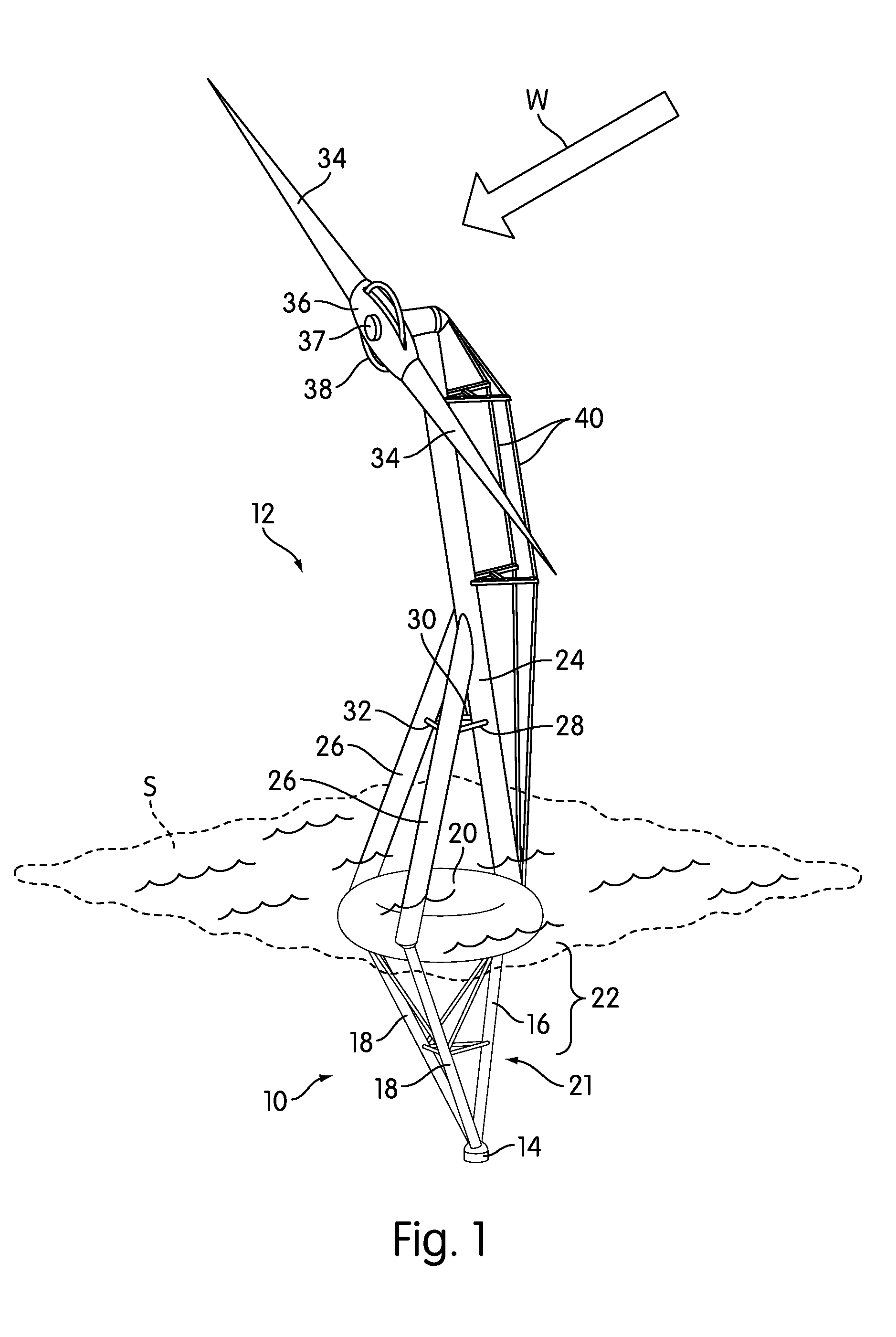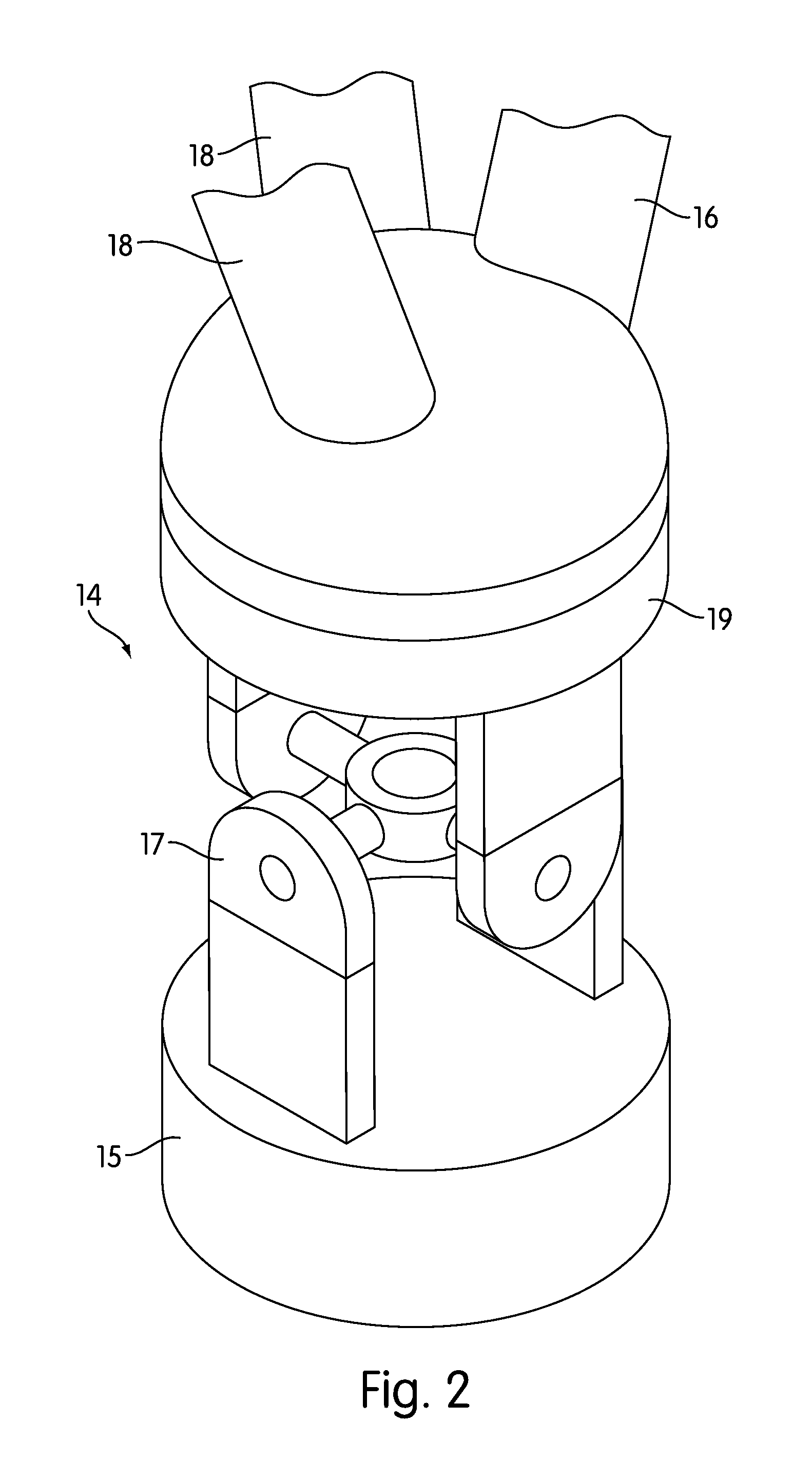Floating underwater support structure
a support structure and underwater technology, applied in the direction of marine propulsion, vessel construction, special-purpose vessels, etc., can solve the problems of tlps not being tlps are not ideal for supporting lighter structures, and the other solutions for supporting lighter structures in shallow and moderately deep water are relatively few
- Summary
- Abstract
- Description
- Claims
- Application Information
AI Technical Summary
Benefits of technology
Problems solved by technology
Method used
Image
Examples
Embodiment Construction
[0023]FIG. 1 is a perspective view of a floating underwater support structure, generally indicated at 10, according to one embodiment of the invention. In the view of FIG. 1, the floating underwater support structure 10 is shown supporting a wind turbine 12. In the following description, certain aspects and advantages of the floating underwater support structure 10 will be described with respect to its use with wind turbines, although as will be described below, the floating underwater support structure 10 may be used to support a variety of structures.
[0024]The floating underwater support structure 10 is anchored to the floor of a body of water. (In certain portions of this description, the terms “sea floor” and “seabed” may be used interchangeably and also refer generally to the floor of a body of water.) The anchor mechanism 14 that anchors the support structure 10 allows rotation and angular movement in at least two axes of motion (i.e., it allows at least two of pitch, roll, an...
PUM
 Login to View More
Login to View More Abstract
Description
Claims
Application Information
 Login to View More
Login to View More - R&D
- Intellectual Property
- Life Sciences
- Materials
- Tech Scout
- Unparalleled Data Quality
- Higher Quality Content
- 60% Fewer Hallucinations
Browse by: Latest US Patents, China's latest patents, Technical Efficacy Thesaurus, Application Domain, Technology Topic, Popular Technical Reports.
© 2025 PatSnap. All rights reserved.Legal|Privacy policy|Modern Slavery Act Transparency Statement|Sitemap|About US| Contact US: help@patsnap.com



